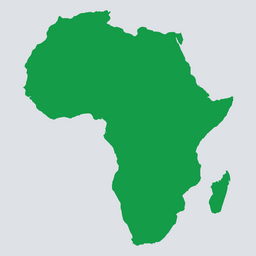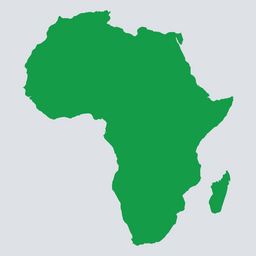OP-ED: From Couch to Connectivity—Building a global network on a failed podcast
A squawking Hadeda ibis, a faltering TV career and a failed podcast in Johannesburg became unlikely building blocks for global tech ecosystem connections.
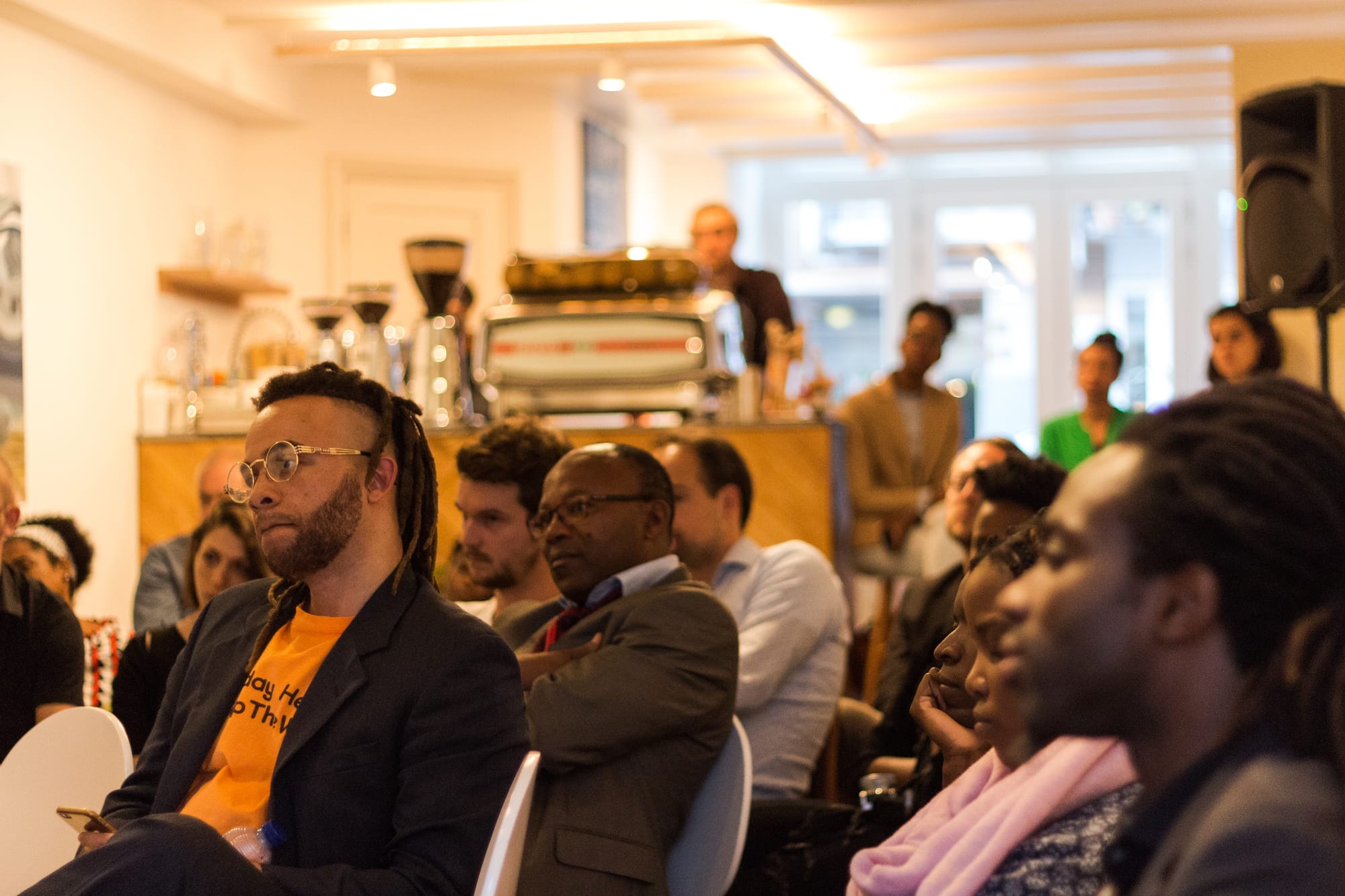
In 2014, I sat on my couch in Randburg, Johannesburg, recording what I hoped would be Africa's answer to NPR, PRX and Gimlet Media's renowned narrative storytelling formats.
The microphone picked up the occasional Hadeda ibis squawking outside my window as I crafted episodes of #AndilesTake. The project emerged during a vulnerable period when I was grasping to rejuvenate my faltering television broadcasting career.
By conventional metrics, that podcast failed. These were the early days of podcasting in Africa, when most folks would give you a blank stare at the term, let alone know how to find and play one. Mobile data costs were painful back then—even steeper than today's rates—and fibre broadband was only just starting its slow creep through my city.
The disruption to mainstream radio à la podcast I dreamed of headlining was not happening. Few people listened. The format didn't catch on. Yet that 'failure' would become the foundation of something far more significant.
From setback to breakthrough
The apparent setback led me to pivot, collaborating with the late Tefo Mohapi, and later Musa Kalenga, to launch the African Tech Roundup podcast—a more sensible, (somewhat) commercially viable talking heads format that initially garnered modest listenership. What I couldn't have known then was how this consistent act of showing up and adding value through content creation would compound over time in ways both predictable and surprising.
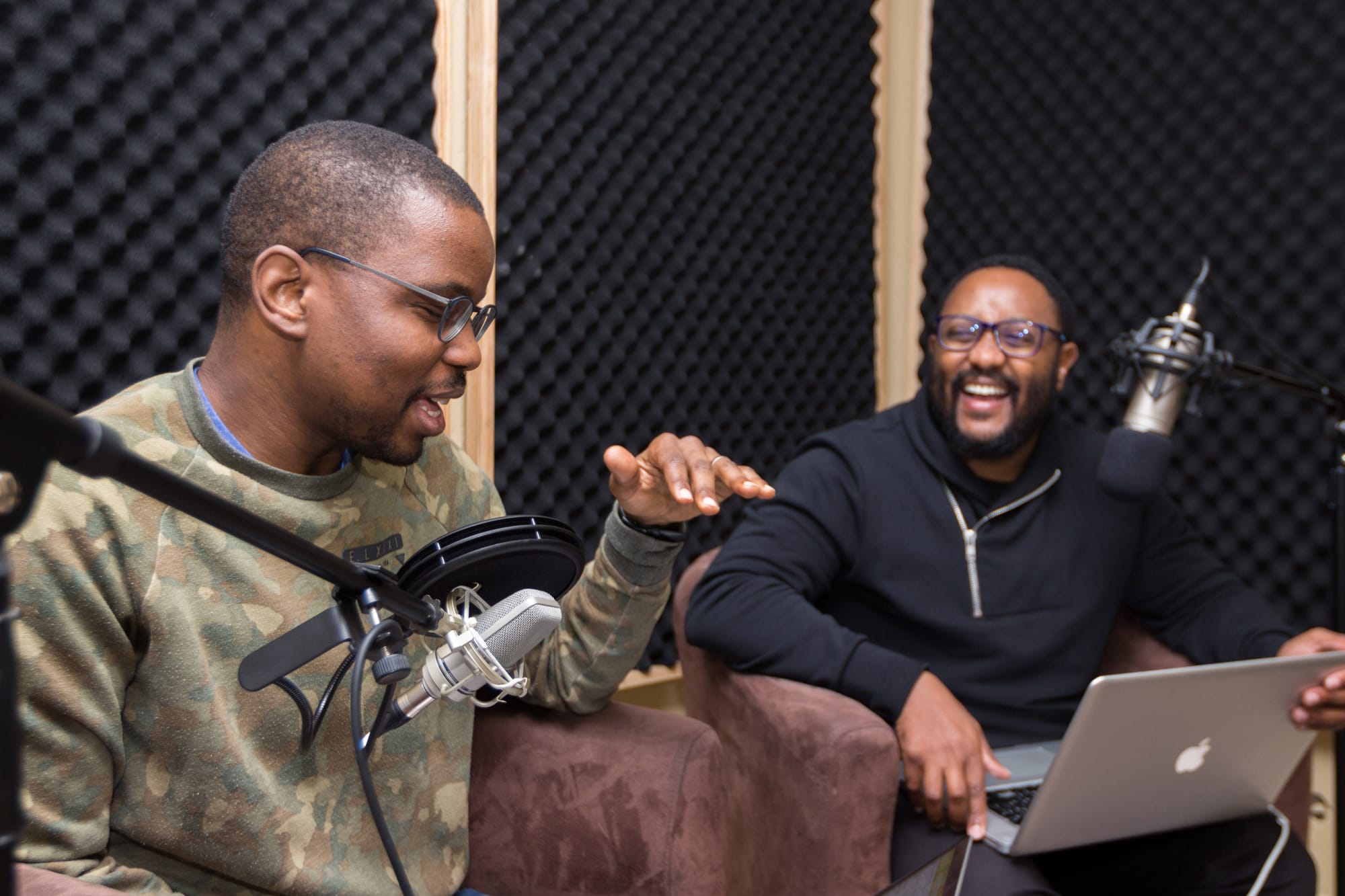
African Tech Roundup unexpectedly blossomed into something remarkable—a vibrant media platform and global community incidentally anchored by dedicated super-listeners from Silicon Valley and Washington DC.
This opened up an eclectic stream of international work: consulting gigs and media collaborations with everyone from VC4Africa and SPARK to Airbnb and Afrobytes and, more recently, engagements with Wits University, South Africa’s Western Cape Government and the International Federation of Health Plans (iFHP).
Five years after I stopped producing #AndilesTake, a senior editor at the BBC World Service 'discovered' those early episodes. They were like a message in a bottle, cast into the digital ocean years earlier, bobbing about in the ether before finally finding their recipient. That discovery led to my most far-reaching broadcasting role yet—producing and hosting "extraordinary personal stories" for their flagship Outlook programme, with each episode reaching a potential global audience of 43 million. Check out some of my favourites: here, here and here.

One of Andile Masuku's most cherished producing and hosting assignments for the BBC World Service's flagship Outlook programme, spotlighting Dutch rapper Sor. | Published on 19 February 2020
Network effects in action
The ripple effects continued. Back when 54 Collective, an early-stage tech VC (then Founders Factory Africa), was still in its planning phases, co-founder Alina Truhina had been quietly listening to African Tech Roundup for over a year. A consulting enquiry led nowhere at first, spawning only a brief chat at a Paris tech conference and, later, a second conversation with the company's MD (current CEO, Bongani Sithole) that COVID derailed.
Yet these seemingly dead-end interactions eventually led to a turnkey role at 54 Collective, where I spearheaded an ambitious media-driven ecosystem engagement strategy serving both the business and our portfolio. During my tenure, that portfolio grew to over 70 startups—all part of a $140 million pan-African fund investing in early-stage African tech startups and providing venture-building support to help them scale.
A framework for understanding
This framework (a refinement of Stephen Bartlett's Five-Bucket Framework) suggests a progression that, while not always linear, tends to follow this path:
Skills → Expertise → Resources → Connectivity
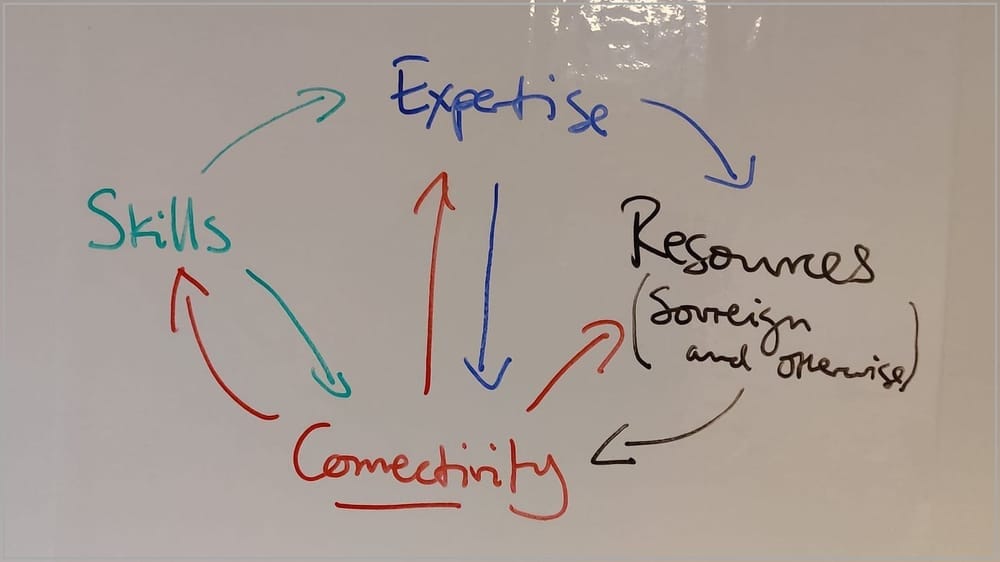
Think of connectivity as a structure built on three foundational elements:
- Relationships: The actual humans you know and interact with
- Network Access: Your ability to reach and engage with communities and institutions
- Reputational Equity: The trust and credibility you've earned through consistent value creation
Value creation through networks
This kind of value creation for network participants manifests in many ways. Founders have landed investments after sharing their journeys on the African Tech Roundup, not through direct pitching, but through the natural discovery that happens when you share your story openly.
Investors have tapped dealflow. Policymakers have gained insights that informed their decisions. But perhaps most importantly, entrepreneurs and innovators across Africa have found each other, forming collaborations that might never have happened otherwise.
Consider how these network effects compound and deliver value predictably unpredictably over time. Just last week, a Swedish C-suite executive from a leading European medical informatics organisation reached out via LinkedIn. He had discovered my work in the most analogue of ways—reading this #TechTidesTuesday article in print while waiting for his flight home at OR Tambo International Airport.
In the same week as one of South Africa's most prolific newspaper titles succumbing to digital disruption, here was a reminder of the lingering prestige of physical formats and proof that they can still facilitate powerful niche reach.
Theory in practice
This brings us to the insights of network theory, as explored by organisations like Converge and Small Foundation, and helpfully unpacked by Circle Generation in their Alive & Learning podcast. Their work suggests we need to view networks not as mechanical systems but as living organisms—dynamic, interconnected ecosystems where relationships, emergence, and co-creation drive lasting change.
Think of a healthy network like a thriving forest. Just as a forest isn't merely a collection of trees but a complex web of relationships between plants, animals, fungi, and microorganisms, a healthy professional network isn't just a list of contacts. It's a living system where each connection can spark unexpected collaborations and opportunities.
Impact measurement and value creation
The impulse to quantify and systematise network outcomes misses something essential about how connectivity actually works. Yes, we can track metrics like founders landing investment after sharing their stories, or policymakers crafting more informed regulations after engaging with our content. But some of the most profound impacts emerge organically, defying neat categorisation or attribution.
Take my wife Sithabiso's career turn. While exploring a pivot from her actuarial roles at Munich Re and later Liberty Life, connections built through African Tech Roundup provided an unexpected bridge. The catalyst came during a casual post-podcast conversation, when a guest's accompanying PR handler mentioned that the Wits Health Consortium was one of her clients—an organisation Sithabiso had been applying to for months without reply.
Two strategic email introductions later, Sithabiso found herself in an interview with one of the Consortium's founding directors. Turns out, he'd invited his fellow directors from the Health Economics and Epidemiology Research Office (HE²RO) along for the conversation.
The exchange culminated in a job offer for a position that hadn't previously existed. That connection paved her pivot from insurance to health economics, where she conducted research that helped shape South Africa's first breast cancer prevention and control policy - work she's now expanding as a principal investigator with 5-year backing from the Wellcome Trust. (No doubt, given her brilliance, Sithabiso would have found her way into the industry by some other means—but this particular path emerged through providence.)

Perhaps the most powerful metric is what I call 'second-order connectivity'—when members of your network begin creating their own powerful connection points. This is how networks become truly self-sustaining, with value creation extending beyond any single node or initiative, often yielding impacts far different from and greater than strategically intended.
Ritualised engagement
This is where we need to examine what I call 'ritualised ecosystem engagement'—a term that admittedly needs unpacking. Think of it as showing up consistently in ways that add value to your community. In my case, this takes multiple forms: writing a weekly syndicated column, recording podcasts, frequently joining Lunchclub meetings, availing myself regularly for peer-to-peer mentorship calls, and attending industry gatherings. The key is consistency and intentionality.
When the Western Cape Government's Digital Transformation team reached out a few months ago to invite me to join one of their executive strategy sessions (and by they, I mean their digital transformation lead, Marcus Rance), it wasn't because of a single column or podcast episode. It was because he had observed and benefited from a consistent pattern of insights curation, knowledge sharing and community building over time.
Seeds of connection
Connectivity is the lifeblood of innovation. Yet, in an ecosystem burdened by trust deficits, access gaps, fragmented markets and opaque power structures, building and leveraging networks is anything but straightforward.
I've recently written about how, as Africa's innovation ecosystem matures, we're witnessing what I term 'connectivity-native' organisations building structured approaches to bridge gaps between international capital and local innovation, while supporting individual innovators who create new channels for ecosystem education.
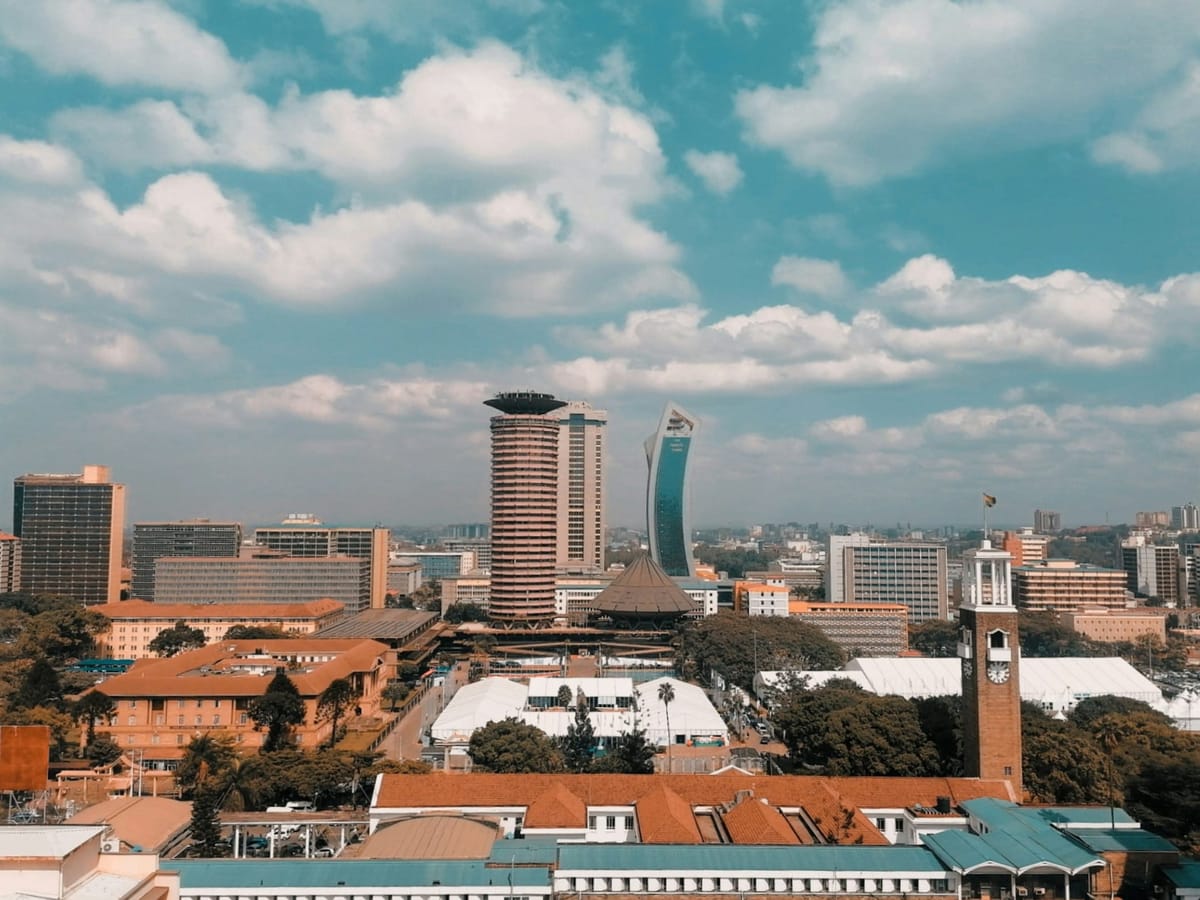
The future belongs to those who can combine systematic organisational approaches with innovative individual practices. Success will depend on our ability to:
- Embed connectivity into daily routines through ritual micro-actions
- Create platforms and spaces that enable others to build meaningful connections
- Measure and iterate on connectivity initiatives based on concrete outcomes
- Support both institutional and individual innovations in network building
Call to action
Connectivity isn't just about expanding our networks—it's about deepening them. It's about creating spaces where authentic relationships can flourish, where knowledge can flow freely, and where collaboration can drive meaningful change.
Part of the challenge for those of us (in suits) inclined to optimise for business performance and operational efficiencies is getting comfortable with that tension. We must find ways to systematically move us all from individual success stories to scalable frameworks that can be adapted across different contexts and organisations.
This requires both strategic vision and tactical savvy, balancing high-level theoretical understanding with ground-level implementation leveraging new technologies and unconventional approaches.
The initial 'failure' of #AndilesTake led to the creation of African Tech Roundup, which in turn catalysed countless opportunities for others in the ecosystem. A reminder that in connectivity, as in innovation, what appears to be a setback might actually be the foundation of something far more significant.
Ultimately, connectivity isn't just a tool for individual success—it's the foundation upon which Africa's innovation ecosystem will thrive.
Editorial Note: This article is an evolution of a quasi-manifesto I published on African Tech Roundup and Business Report titled "Unlocking Innovation—The power of prioritising connectivity in your strategy" (September 2024). While I nearly discarded that draft for being overly abstract, I've decided to keep it as a marker of my thinking at the time.
This significantly revised version benefits from the excellent counsel of Garrett Kincaid, editor-in-chief and curriculum director at Write of Passage, who I connected with through his community when he offered to critique writing projects—itself a perfect example of the kind of network-enabled value creation this essay discusses.
Garrett's advice to ground my abstract ideas in specific examples proved particularly valuable—especially his suggestion to check out Roy Peter Clark's handy resource on the Ladder of Abstraction.



